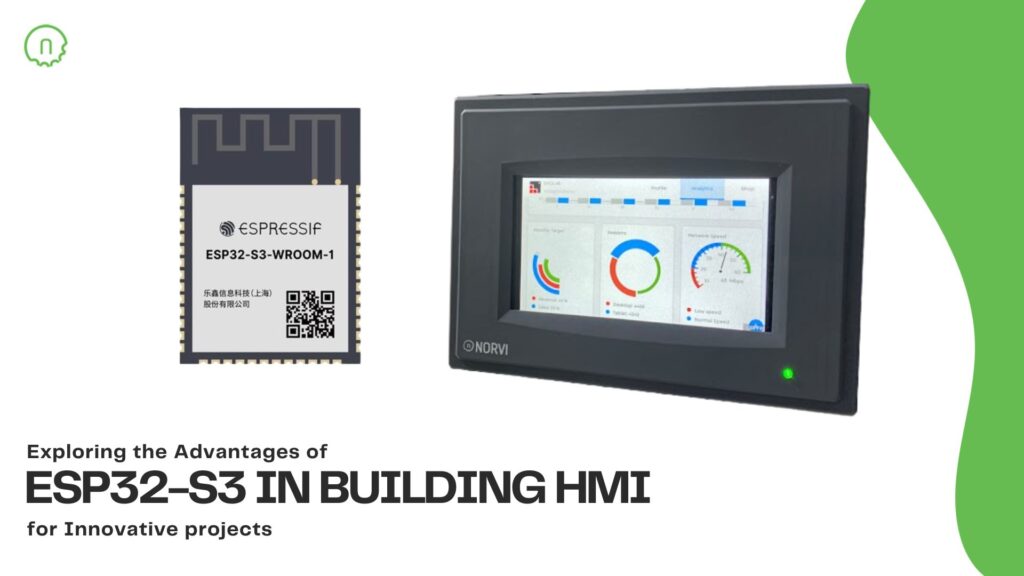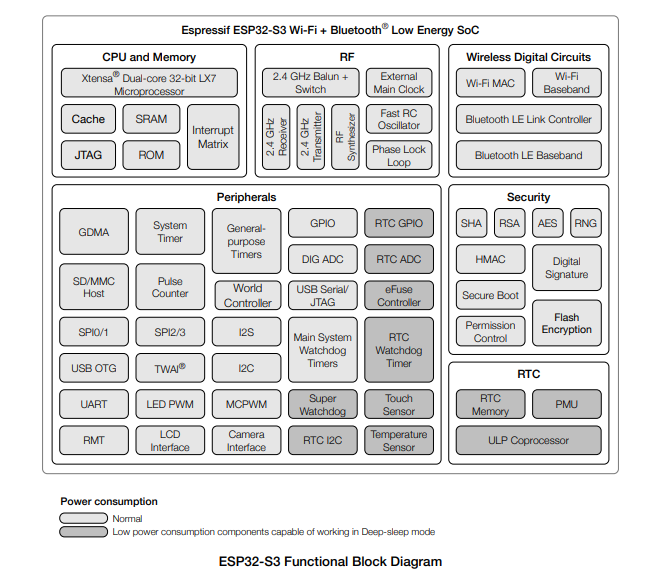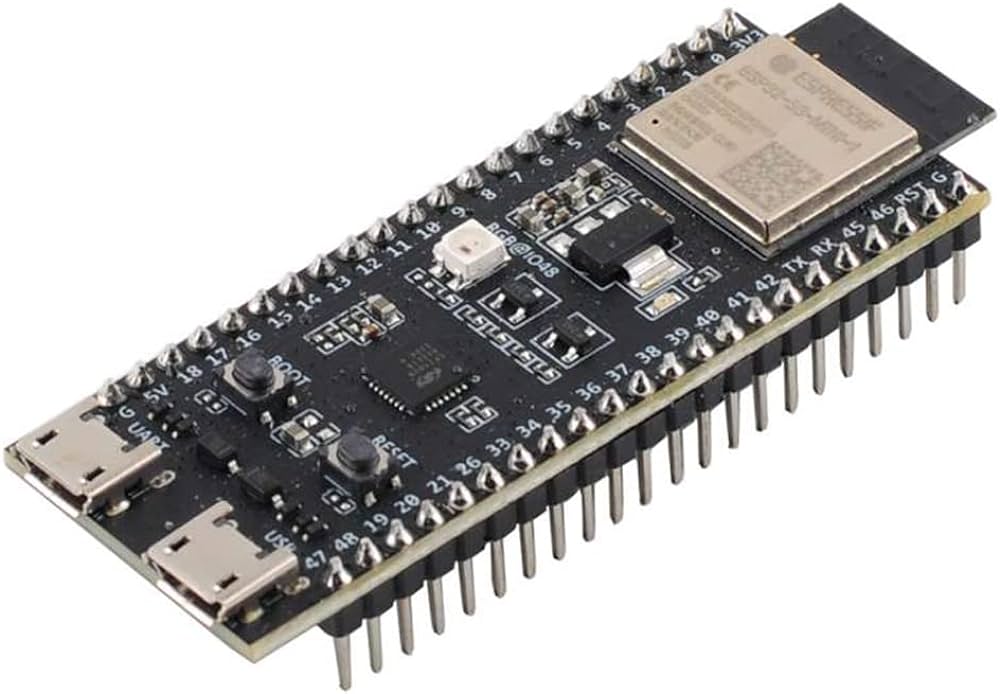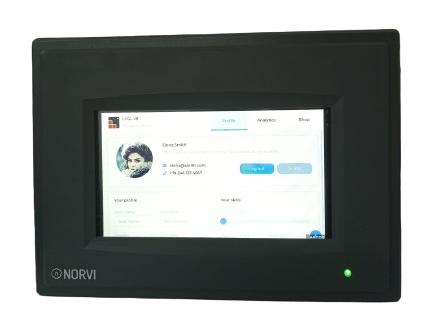
In today’s technologically advancing world, the creation of Human-Machine Interfaces (HMIs) has become increasingly crucial across diverse industries. HMIs serve as the bridge facilitating seamless communication between humans and machines, enhancing user interaction and control. Among the array of microcontrollers available, the ESP32-S3 emerges as a versatile and powerful choice for constructing HMIs due to its myriad advantages and capabilities. Let’s explore what are the advantages of ESP32-S3 in Building HMI.
Introduction to ESP32-S3

The ESP32-S3, an innovation from Espressif Systems, has garnered acclaim for its exceptional ability to amalgamate high-performance computing prowess, seamless wireless connectivity, and an extensive array of GPIO pins within its compact architecture. Its distinguishing attributes include the deployment of a dual-core processing system, adept support for both Wi-Fi and Bluetooth protocols, and a diverse suite of peripherals. This unique amalgamation positions the ESP32-S3 as an optimal and versatile microcontroller specifically tailored to cater to the intricacies and demands of Human-Machine Interface (HMI) applications across various domains.
Advantages of ESP32-S3 in Building HMI

- Robust Processing Power: With its dual-core architecture and efficient processing units, the ESP32-S3 exhibits remarkable computational capabilities. This prowess enables swift data processing, facilitating real-time responsiveness in HMI applications, and ensuring a smooth user experience.
- Versatile Wireless Connectivity: The ESP32-S3’s support for Wi-Fi and Bluetooth technologies proves instrumental in establishing wireless connections between the HMI system and external devices. This feature enables remote control, data exchange, and seamless integration into IoT ecosystems, enhancing the system’s flexibility and usability.
- Abundance of GPIO Pins: Equipped with a generous number of General-Purpose Input/Output (GPIO) pins, the ESP32-S3 allows for seamless interfacing with various peripherals, including displays, sensors, and actuators. This flexibility simplifies hardware integration and expands the range of functionalities achievable within the HMI setup.
- Rich Set of Peripherals: The ESP32-S3 incorporates a diverse array of peripherals, including SPI, I2C, UART interfaces, ADCs, DACs, and more. These peripherals facilitate interfacing with a wide range of sensors, displays, and input devices, enabling the creation of comprehensive and feature-rich HMIs.
- Low Power Consumption: Efficient power management features in the ESP32-S3 contribute to reduced power consumption, which is crucial for battery-operated devices or applications where energy efficiency is paramount. This ensures prolonged operation without frequent recharging or power interruptions.
- Integrated Security Features: The microcontroller integrates robust security mechanisms, including secure boot, flash encryption, and cryptographic hardware acceleration. These features bolster the overall security of the HMI system, safeguarding against potential cyber threats and unauthorized access.
- Rich Development Ecosystem: Supported by robust development environments like ESP-IDF and Arduino IDE, the ESP32-S3 offers an extensive library of resources, documentation, and community support. This facilitates easier prototyping, debugging, and development of HMIs, reducing time-to-market for innovative solutions.
Applications of ESP32-S3 in Building HMI
The ESP32-S3 demonstrates its multifaceted applications across a spectrum of industries and domains:
- Smart Home Automation: Leveraging the ESP32-S3 facilitates the creation of seamless and user-friendly interfaces to oversee a plethora of smart home functionalities. Users can effortlessly manage an array of operations encompassing lighting controls, temperature adjustments, surveillance systems, and an array of connected devices through a singular, intuitive interface.
- Industrial Control Systems: The formidable processing capabilities and GPIO versatility of the ESP32-S3 render it an optimal choice for orchestrating Industrial Human-Machine Interfaces (HMIs). Its adeptness enables the monitoring, control, and automation of machinery and intricate processes within manufacturing and production landscapes, augmenting efficiency and precision.
- Healthcare and Wearable Devices: Its efficiency in power consumption and wireless connectivity features positions the ESP32-S3 as an advantageous component in the realm of healthcare HMIs. This microcontroller serves as a foundational element in crafting solutions such as remote patient monitoring systems and innovative wearable health devices, catalyzing advancements in healthcare services.
- IoT and Consumer Electronics: The ESP32-S3’s prowess in wireless communication renders it an indispensable component within the Internet of Things (IoT) ecosystem and consumer electronics. Its capabilities enable the development of interactive interfaces tailored for smart devices, wearables, and the central hubs orchestrating the interconnectedness within the burgeoning IoT landscape.
NORVI ESP32-S3 in Building HMI
The NORVI HMI, featuring the SP32-S3 Module from Espressif, represents a robust and versatile solution tailored for Human-Machine Interface (HMI) applications. This comprehensive system amalgamates advanced technology components, including a powerful processor with inherent communication capabilities, a 5-inch LCD with a Resistive Touch Panel for optimal user interaction, and RS-485 communication support ideal for MODBUS interactions with a HOST Processor. Moreover, the HMI incorporates Isolated Digital Inputs for seamless sensor or switch integration, Analog Inputs supporting 0 – 10V and 4-20mA ranges with a 16-bit ADC for precise signal handling, and Transistor Outputs capable of driving 24V relays and generating PWM outputs. This rich feature set positions the NORVI HMI as a versatile, reliable, and adaptable platform suitable for a broad spectrum of industrial and automation scenarios, facilitating efficient data exchange, device control, and user interaction within various environments.

Conclusion
The ESP32-S3 microcontroller, renowned for its robustness and adaptability, emerges as an optimal and multifaceted solution for fabricating Human-Machine Interfaces (HMIs). Its intrinsic fusion of formidable processing capabilities, an extensive array of connectivity options, adaptable hardware interfacing capabilities, and fortified security features underscores its suitability. This versatile microcontroller’s applications transcend across multifarious industries, holding the promise of orchestrating seamless interactions between users and machines while fostering a culture of innovation within the realm of Human-Machine Interfaces. Harnessing the inherent advantages of the ESP32-S3, developers are empowered to craft intricate, highly responsive, and feature-laden HMIs meticulously tailored to cater to a wide spectrum of user needs and preferences.
